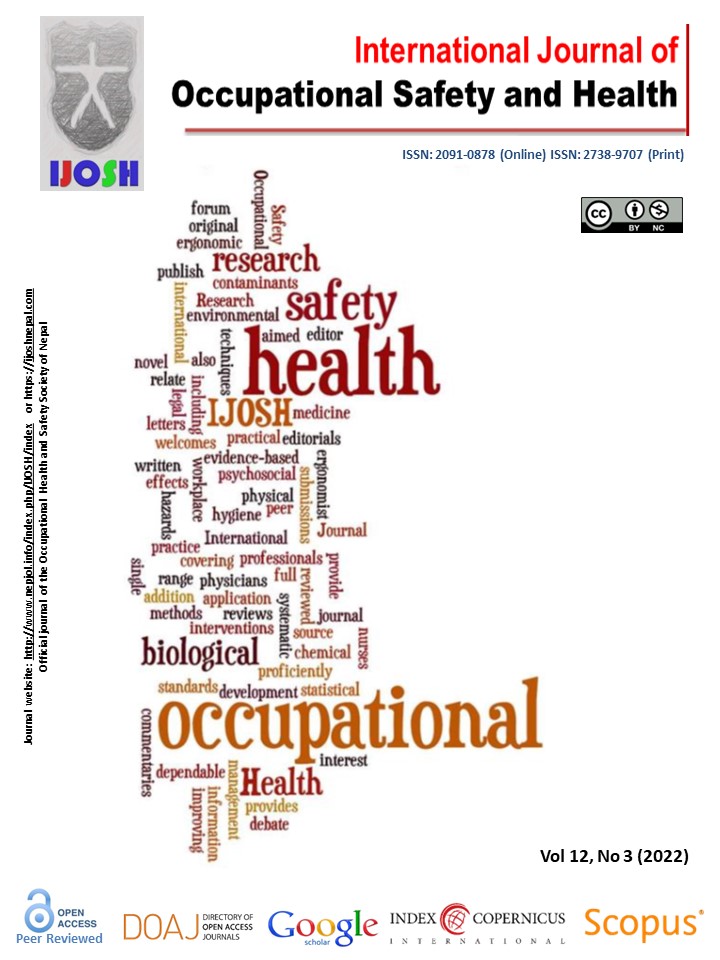Burnout among doctors working at a tertiary care hospital during pandemic of COVID-19 in Kashmir Valley, India
DOI:
https://doi.org/10.3126/ijosh.v12i3.41970Keywords:
Burnout, COVID-19, Health care workers, ExhaustionAbstract
Introduction: Burnout syndrome (BO) has negative consequences for the doctors, their family members, co-workers, and also the patients. We conducted this study to estimate the prevalence of BO among doctors working in a tertiary care hospital in Kashmir valley just after the peak of the second COVID-19 wave.
Methods: This cross-sectional study was conducted among doctors working at one tertiary care hospital in Kashmir Valley. Participants included interns, residents (junior and senior residents) and faculty members. An online questionnaire containing Oldenburg Burnout Inventory to estimate burnout was used for data collection from 1st to 10th July 2021. In addition, the questionnaire captured demographic information, job profile and work-related information. Mean scores of ≥ 2.25 on exhaustion and ≥ 2.1 in the disengagement domain were used to define burnout. Binary logistic regression was used to evaluate associations.
Results: Of the 322 participants in the study, 119 (36.9%) had completed their post-graduate degree. Of the participants, 150 (46.6%) had to perform 6 or more-night shifts per month and, 61 (18.9%) had previously been diagnosed with COVID-19. Of the participants, 257 (79.8%) had BO, 24 (7.5%) were exhausted and 17 (5.3%) were disengaged. BO was associated with female gender, younger age, number of night duties and emergency room duties per month, being a resident doctor and history of COVID-19 infection on binary logistic regression.
Conclusion: This survey reported a very high prevalence of burnout among doctors. Addressing BO among healthcare workers should be a key priority for improving quality of life among doctors and to improve quality of care.
Downloads
Downloads
Published
How to Cite
Issue
Section
License
Copyright (c) 2022 Umar Nazir, Seema Aleem, Asif Jeelani

This work is licensed under a Creative Commons Attribution-NonCommercial 4.0 International License.
This license enables reusers to distribute, remix, adapt, and build upon the material in any medium or format for noncommercial purposes only, and only so long as attribution is given to the creator.





